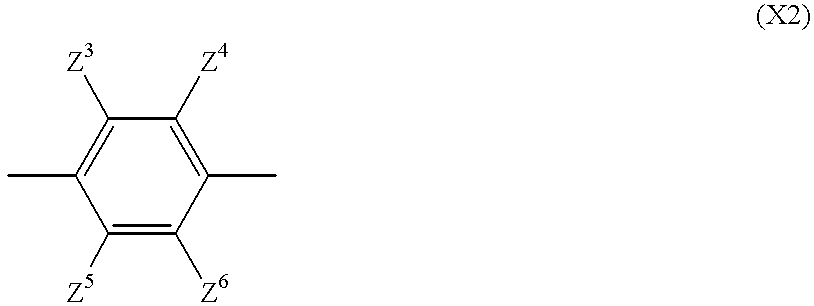Process for preparation of dicarboxylic acid monoesters
a technology of dicarboxylic acid and monoesters, which is applied in the preparation of ester-hydroxy reactions, chemical apparatus and processes, and organic chemistry, etc. it can solve the problems of increasing production costs, difficult to industrially efficiently obtain the desired monoesters, and inability to use catalysts for substrates containing carboxylic acid in the structure, etc., to achieve the effect of increasing the solubility of metal alkoxide or the starting monoesters
- Summary
- Abstract
- Description
- Claims
- Application Information
AI Technical Summary
Benefits of technology
Problems solved by technology
Method used
Image
Examples
example 2
Synthesis of mono-tert-butyl terephthalate
In the same manner as in Example 1, 10 g (0.056 mol) of monomethyl terephthalate and 200 ml (2.081 mols) of tert-butyl alcohol were charged, and 8.10 g (0.070 mol, 1.3 equivalent) of potassium-tert-butoxide was poured thereinto little by little at room temperature. As a result, the reaction mixture generated heat to result in rising of the temperature to 35.degree. C., and white crystals were precipitated in the reaction mixture. Thereafter, the reaction mixture was heated to 83.degree. C. and the reaction was carried out for 17 hours, during which methyl alcohol produced by the transesterification was distilled off together with tert-butyl alcohol, and tert-butyl alcohol in the same amount as the amount of the distilled tert-butyl alcohol was continuously added through the dropping funnel. After completion of the transesterification, tert-butyl alcohol was distilled off under normal pressure, and the residue was allowed to stand for cooling...
example 3
Synthesis of monoisopropyl malonate
In the same manner as in Example 1, 5 g (0.029 mol) of potassium salt of monoethyl malonate and 100 ml (1.305 mol) of isopropyl alcohol were charged, and 0.41 g (0.0059 mol, 0.2 equivalent) of potassium methoxide was poured thereinto little by little at room temperature. As a result, the reaction mixture generated heat to result in rising of the temperature to 35.degree. C., and white crystals were precipitated. Thereafter, the reaction mixture was heated to 82.degree. C. and the reaction was carried out for 6 hours, during which ethyl alcohol produced by the transesterification was distilled off together with isopropyl alcohol, and isopropyl alcohol in the same amount as the amount of the distilled isopropyl alcohol was continuously added through the dropping funnel. After completion of the transesterification, isopropyl alcohol was distilled off under normal pressure, and the residue was allowed to stand for cooling. Then, 100 ml of ice water was...
example 4
Synthesis of monobenzyl malonate
In the same manner as in Example 1, 10 g (0.059 mol) of potassium salt of monoethyl malonate and 200 ml (1.929 mol) of benzyl alcohol were charged, and 0.1 g (0.0001 mol, 0.02 equivalent) of potassium methoxide was poured thereinto little by little at room temperature. As a result, the reaction mixture generated heat to result in rising of the temperature to 35.degree. C., and white crystals were precipitated. Thereafter, the reaction mixture was heated to 90.degree. C. and the reaction was carried out for 6 hours, during which ethyl alcohol (containing a slight amount of methyl alcohol resulting from potassium methoxide) produced by the transesterification was continuously distilled off. After completion of the reaction, the reaction mixture was left to stand for cooling. Then, 100 ml of ice water was added thereto, followed by subjecting to separation washing once with 100 ml of ethyl acetate. To the resulting aqueous phase was added 1N hydrochloric...
PUM
| Property | Measurement | Unit |
|---|---|---|
| temperature | aaaaa | aaaaa |
| temperature | aaaaa | aaaaa |
| temperature | aaaaa | aaaaa |
Abstract
Description
Claims
Application Information
 Login to View More
Login to View More - R&D
- Intellectual Property
- Life Sciences
- Materials
- Tech Scout
- Unparalleled Data Quality
- Higher Quality Content
- 60% Fewer Hallucinations
Browse by: Latest US Patents, China's latest patents, Technical Efficacy Thesaurus, Application Domain, Technology Topic, Popular Technical Reports.
© 2025 PatSnap. All rights reserved.Legal|Privacy policy|Modern Slavery Act Transparency Statement|Sitemap|About US| Contact US: help@patsnap.com



